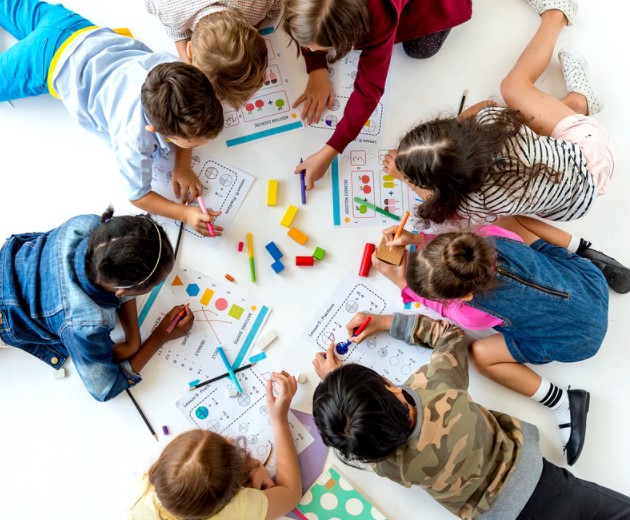
Mathematics is one of the most difficult sciences and subjects taught in school. And the difficulty lies in the fact that arithmetic, as an introduction to mathematics, is studied from the first grade of school, and sometimes even in the preschool period. Therefore, children face challenges from the very first days of learning the world around them through science. An ineffective approach and constant talk about math being a difficult subject can aggravate the situation and completely dismiss and kill the child’s desire to learn numbers, and other concepts related to mathematics. In order not only not to alienate, but also to instill interest and love for this science and subject, an approach should be chosen so that the child is both interested and has no difficulties in learning new concepts, equations, formulas, and operations.
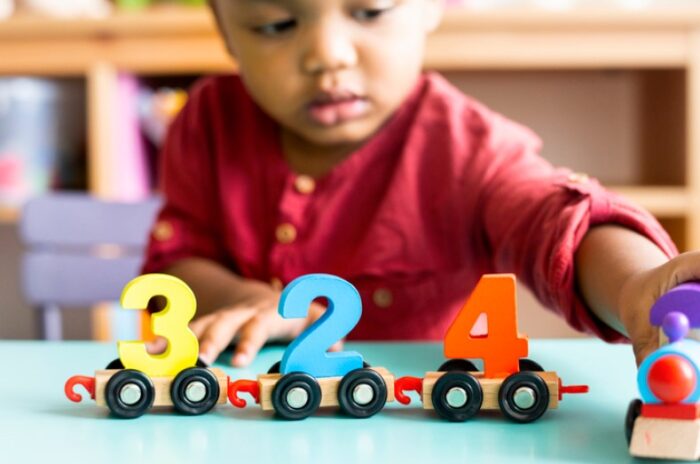
Preschool children want to play and are not ready to have to do something just because he or she “has to do”. He/she doesn’t understand that all of this will come in handy in life, and how he/she can use it since he/she is still a child. Parents, as well as teachers and caregivers, can choose the easiest way to help their children to learn math, as one of the easiest ways, without the kid even understanding that he/she is involved in the educational process, even if you’ll add some complex elements from ESingaporeMath approach. This is a basic everyday method – learning and teaching on a daily basis in a natural environment for the child.
The following are the most effective ways of teaching children math concepts with the help of improvised means at home or any other place where your kid is.
1. Explaining the concept of counting and numbers
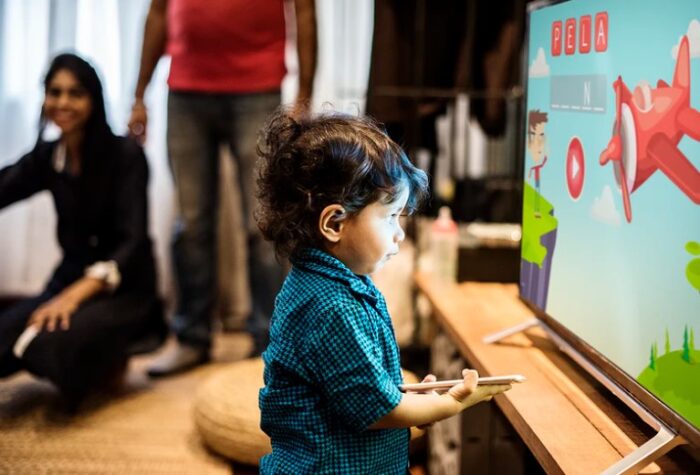
A basic explanation of what counting is for, what numbers are, and why your child needs to learn to distinguish between them. You show your child objects in different numbers that are located in the closest environment – a room, a park where your baby walks, or a school. You can also use your baby’s favorite cartoons – show that there are different numbers of characters, their friends, and foes.
This approach is suitable for the youngest, who is still just getting up on the path of learning math and cognition in general. You can explain the concept of counting and numbers with examples of “bigger-smaller”. Of course, this is better to use the most valuable items for the baby. These can be toys, candies, and other sweets, etc. After you show your toddler that he/she has, for example, 10 candies or toys, and his friend has 1, he/she will understand the basics of counting and comparison.
2. Adding and subtracting through cooking
Moms and dads who really like to cook can spend a little more time cooking by involving their toddlers in the process. For example, by cutting up the vegetables or fruit needed for your dish, you can show what will happen if you subtract or add a certain number of pieces to this or that plate or pot. Here you can also explain to your baby the concepts of volume and mass, “heavy-light”, by weighing cereals, vegetables, and other ingredients on a scale or in the hands.
3. Games where counting is needed
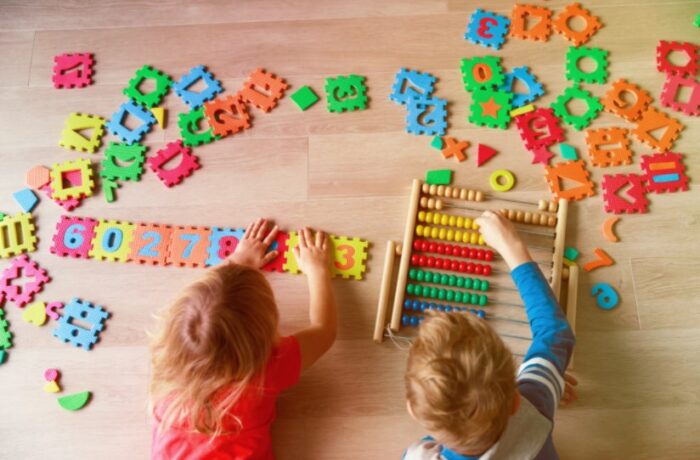
This includes both board games such as dominoes, bingo, dice games, and card games where numbers are used and calculation is needed. These games are suitable for older, preschool-aged children, and will be good preparation for school. With only these games, children can learn to add, subtract, and if parents will try, to divide and multiply, and then go to school with a “passed” first-grade program.
It is important to note that children should not just be explained how to play the game, but rather how to keep score in order to win. The most important thing here is not the game itself, but to convey the ability to calculate to the child. It is desirable to use real physical dice, dominoes, and cards rather than digital ones, as the latter is harmful to the child’s posture, vision and still forming nervous system.
4. Handmade and Art
If your little one is interested in handmade or art – you should show him/her all options – for example, diamond embroidery, cross-stitch, knitting would work for girls, wood-burning, constructors, assembling cars and other vehicles for boys, and drawing as a common way for girls and boys to learn basic number concepts. How, exactly? Consider this.
If consider the embroidery, whether diamond or cross-stitch, you need to know how many crosses to fill in with threads of one color or another. The same goes for knitting – girls need to know how many loops of one kind should be replaced by loops of another kind. Here also arises the concept of “bigger-smaller”, since you can visually see which color and how many crosses or loops filled it is present on the finished work.
Constructors and prefabricated toys are also often numbered, which facilitates the learning process. Here you can also teach a child the concept of “bigger-smaller”, “higher-lower”, “thiner-wider”, as it is clearly visible, which of the parts prevail in a toy.
In case of drawing, paints by numbers are ideal, because they are directly teaching numbers and developing attention and awareness of them. For example, in order to paint over a part of a drawing highlighted by number 1, the child needs to find a color designated by this number, and then match it with a paint/sticker/pencil.
5. Group Activities
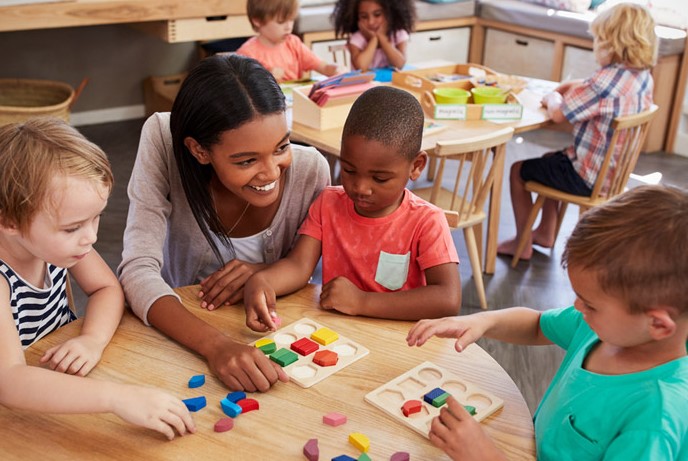
Children love to play all together, and the younger they are, the more relevant this is. Try to get siblings, cousins, or kindergarten or schoolmates together to explain the math concepts of the operation more deeply for a more sustainable result. This can also be done in a playful way, by using all the aforementioned ways for greater engagement.
With pandemic and social distancing, this is difficult to do, so all of this activity can be moved into the online space. This is possible through professional solutions such as the Singapore Math homeschool curriculum or Khan Academy programs, which provide group lessons in math and other sciences through their educational platforms. Children can also be taught individually, either with parents or teachers, either playfully or in a classroom manner. Program selection is individualized to the needs and abilities of each child and their parents, so you can adjust the level of gamification, the complexity of the curriculum, and the frequency of the classes yourself.
6. Photography
Probably, you are taking unusual photos, like those where you hold the moon in your hands or become the same height as a flower in a meadow. It is a great way to show your toddler the difference in height and distance, to explain the concept of “far-close” and at the same time to develop creative and design skills.
Conclusion
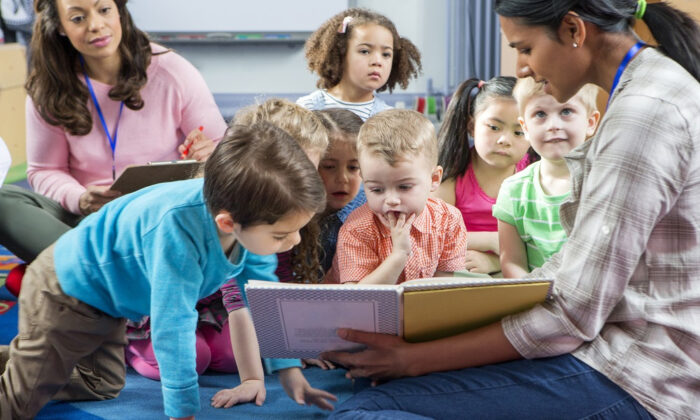
Learning math can be a very funny and exciting process for kids of all ages. The main thing that parents and teachers should pay attention to is visualization. Illustrative examples will help not only quickly memorize new concepts, but also immediately see their application in practice and in everyday life.
Do not be afraid to spend more time on household chores or an educational walk, as maybe they will be the crucial factor in the formation of curiosity about mathematics and the world around you as a whole.








